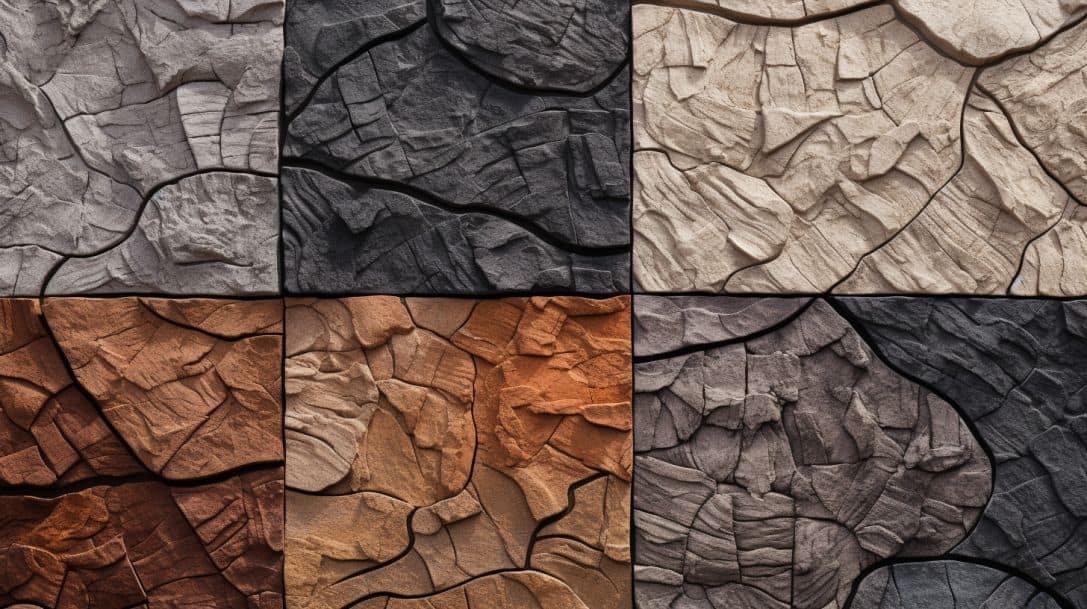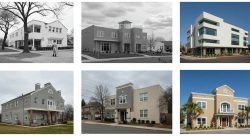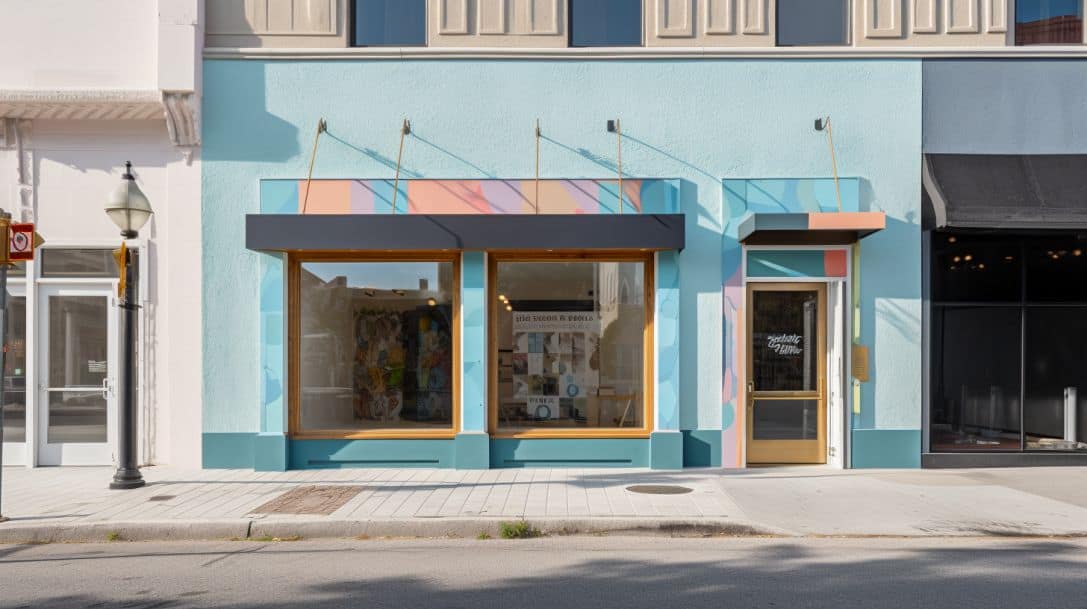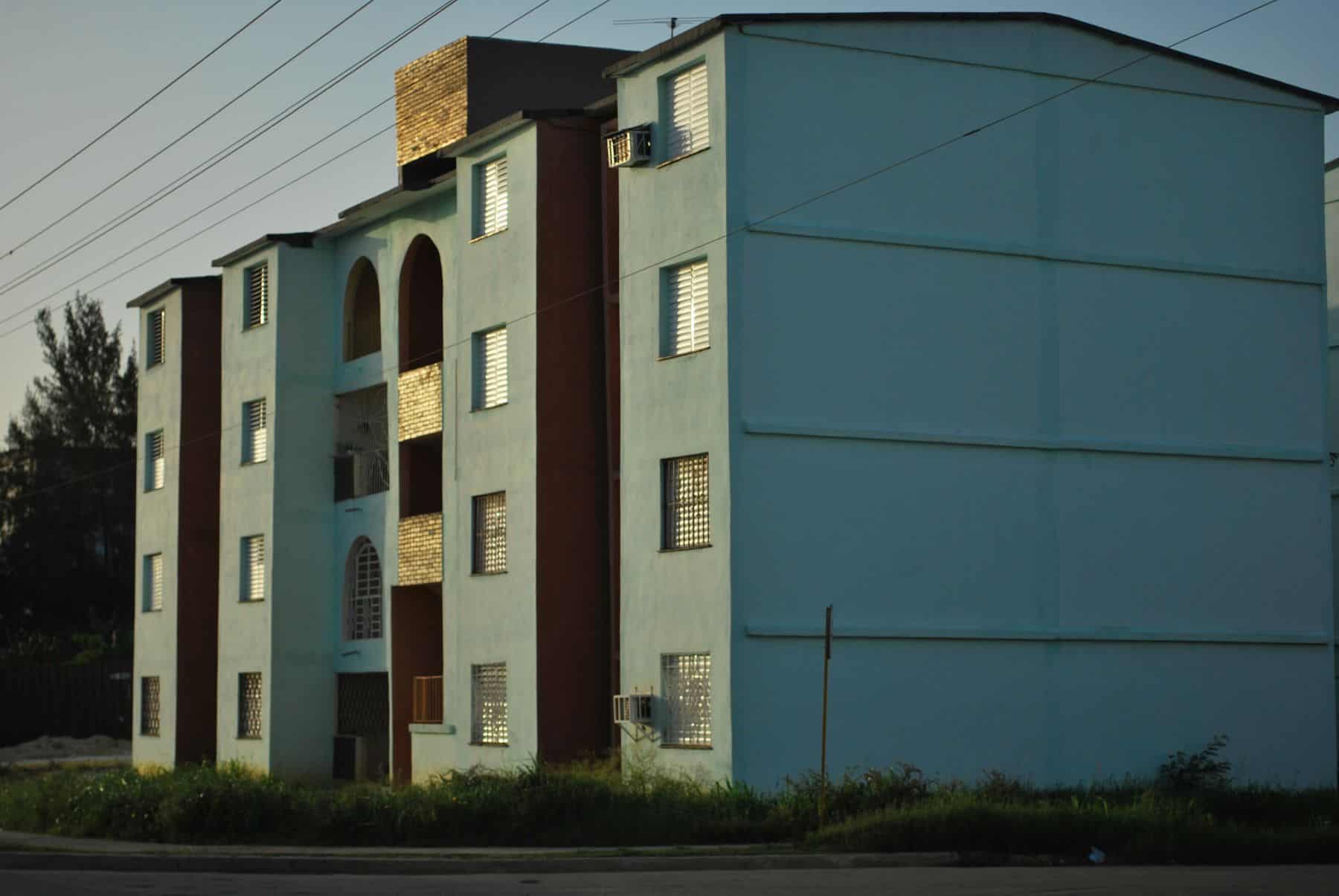Unveiling the Elegance of EIFS: A Contemporary Game-Changer in Exterior Design and Insulation
Key Takeaways:
- EIFS offers a seamless and monolithic appearance, providing a modern aesthetic for buildings.
- Due to its lightweight characteristics, EIFS is suitable for both new construction and retrofit projects, reducing load-bearing requirements.
- EIFS is highly energy efficient, providing enhanced insulation and reducing the overall energy consumption of buildings.
- Understanding the differences between EIFS, plaster, and stucco is crucial for choosing the best option for a specific project.
- Proper detailing and installation of EIFS require careful design considerations and skilled craftworkers.
- EIFS finds application in various sectors, including residential, commercial, institutional, and industrial buildings.
Introduction
EIFS: Achieving a Modern Aesthetic
EIFS, an acronym for Exterior Insulation and Finish System, is an ideal solution for achieving a modern and aesthetically pleasing look for buildings. With its ability to seamlessly blend with different architectural styles, EIFS offers a versatile approach to exterior design. This innovative system combines insulation and finishing in a single application, providing energy efficiency, durability, and enhanced visual appeal.
By utilizing EIFS, architects and designers can create unique and captivating building exteriors that reflect the desired modern aesthetic. With a wide range of colors, textures, and finishes available, EIFS allows for endless design possibilities. The system can be customized to match various architectural elements, such as windows, doors, and corners, resulting in a harmonious and cohesive appearance.
Moreover, EIFS offers distinct advantages over other cladding systems. Its lightweight nature allows for easy installation, reducing construction time and costs. Additionally, the insulation layer of EIFS improves the energy efficiency of buildings, leading to reduced heating and cooling expenses for occupants.
A true fact about EIFS is that it has been widely adopted in the construction industry. According to an article titled “EIFS: The Perfect Solution for Achieving a Modern Aesthetic,” EIFS gained popularity due to its ability to enhance the visual appeal of buildings while providing practical advantages in terms of insulation and durability.
In summary, EIFS offers a modern aesthetic solution for building exteriors. This system combines insulation and finishing, allowing for customization and energy efficiency. Its widespread adoption in the construction industry is a testament to its effectiveness in achieving visually appealing and sustainable designs.
The Advantages of EIFS
When it comes to achieving a modern aesthetic, EIFS (Exterior Insulation and Finish System) has proven to be the perfect solution. The advantages of EIFS are diverse and impressive.
First, EIFS offers a seamless and monolithic appearance, creating a sleek and polished look for any building facade. Additionally, its lightweight characteristics make it a practical choice for construction projects, allowing for easier installation and reduced load-bearing requirements.
Moreover, EIFS boasts exceptional energy efficiency, contributing to lower heating and cooling costs. With these benefits, EIFS is undeniably a top choice for modern design and sustainability.
Seamless and Monolithic Appearance
- With its seamless and monolithic appearance, EIFS offers a sleek and modern aesthetic.
- The absence of seams ensures that the exterior surface looks uninterrupted and smooth.
- This seamless feature makes EIFS an ideal choice for contemporary architectural designs.
- The monolithic appearance creates a sense of continuity across the entire building facade.
- EIFS can be customized with different colors, textures, and finishes to achieve specific design goals while maintaining the seamless look.
- The combination of a seamless and monolithic appearance gives buildings a sophisticated and polished visual appeal.
While these points highlight the key aspects of EIFS’ seamless and monolithic appearance, it’s important to note that this feature contributes not only to the visual appeal but also to the overall performance and durability of the system. With its ability to eliminate joints or seams, EIFS reduces potential points of water intrusion and enhances long-term reliability.
EIFS: Making buildings lighter and jokes darker, a perfect combination.
Lightweight Characteristics
EIFS: The Advantages of Its Lightness
EIFS stands out for its lightweight characteristics, contributing to its wide popularity in the construction industry. Here are six reasons why EIFS is known for its lightness:
- Easy handling and installation: The lightweight nature of EIFS makes it easier to handle and install compared to other traditional building materials.
- Reduced structural load: Due to its low weight, EIFS places less stress on the underlying structure, resulting in reduced structural load and potentially allowing for cost savings in building design.
- Transportation benefits: The lightness of EIFS makes it more convenient to transport, allowing for easier logistics and potentially reducing transportation costs.
- Enhanced versatility: The lightweight nature of EIFS allows for greater versatility in architectural designs and can be applied on various substrates without compromising structural integrity.
- Improved energy efficiency: Despite being lightweight, EIFS provides excellent insulation properties, contributing to enhanced energy efficiency by reducing heating and cooling costs.
- Faster installation times: With its lightness, EIFS can be installed more quickly compared to heavier materials, leading to shorter construction timelines and potentially reducing labor costs.
In addition to these characteristics, it is important to highlight that the lightweight nature of EIFS does not sacrifice durability or longevity. With proper detailing and skilled craftsmanship, EIFS can provide long-lasting protection against weather conditions while maintaining its aesthetic appeal.
Investing in EIFS means embracing a modern solution that offers numerous benefits. Don’t miss out on the opportunity to enhance your construction projects with the advantages provided by the lightweight characteristics of EIFS. With EIFS, you’ll be saving energy and money, making your home so efficient that even the bills are jealous.
Energy Efficiency
Energy efficiency relates to the ability of a system or material to efficiently use energy. This is particularly important in the context of EIFS, as it offers several benefits in terms of energy efficiency.
- EIFS helps to create a more energy-efficient building envelope by reducing thermal bridging, minimizing air infiltration, and providing insulation.
- With its lightweight nature, EIFS can enhance the overall energy efficiency of a structure, as it requires less energy for transportation and installation compared to other construction materials.
- The seamless and monolithic appearance of EIFS contributes to its energy efficiency by eliminating gaps and cracks where heat or cold air can escape, resulting in reduced heating and cooling costs.
In addition to these advantages, EIFS also has unique features that further enhance its energy efficiency. For example, the integration of continuous insulation combined with an air barrier system helps to reduce heat loss and improve thermal performance.
It is interesting to note that studies have shown EIFS can reduce heating costs by up to 30% compared to traditional stucco systems (source: Journal of Building Physics).
Differentiating between EIFS, plaster, and stucco is like trying to distinguish between an imposter, a ghost, and a zombie – they might all look similar, but only one will give your building an unbeatable modern aesthetic.
Differences Between EIFS, Plaster, and Stucco
When it comes to achieving a modern aesthetic for your building, understanding the differences between EIFS, plaster, and stucco is essential. It’s fascinating to delve into the nuances of each material and how they contribute to the overall look and feel of a structure.
In this section, we’ll take a closer look at plaster and stucco, exploring their unique qualities, characteristics, and applications in architectural design. By gaining insight into these distinctions, you’ll be better equipped to make informed decisions when it comes to choosing the right material for your project.
Plaster
Table:
| Property | Description |
|---|---|
| Application | Interior walls and ceilings |
| Finish | Smooth and even surface |
| Versatility | Can be molded into different shapes and designs |
| Durability | Long-lasting and resistant to wear and tear |
| Fire Resistant | Provides an added layer of protection against fire incidents |
Plaster has been widely used throughout history, dating back to ancient civilizations. In ancient Egypt, for example, plaster was used to create intricate wall decorations in tombs and temples. Over time, the materials and techniques used for plaster have evolved, resulting in more advanced formulas that enhance its performance and longevity.
Stucco: the reliable exterior option for those who want their house to look like a giant sandcastle.
Stucco
When it comes to the installation process, skilled craftsmen are essential to ensure a proper application of stucco. From surface preparation to finishing touches, attention to detail is crucial for achieving high-quality results. The careful selection of materials and proper techniques are also necessary to ensure the longevity of the stucco finish.
Furthermore, maintaining stucco is relatively simple compared to other exterior finishes. Regular cleaning and minor repairs can help preserve its quality over time. However, larger repairs or renovations may require professional assistance to ensure seamless integration with existing stucco surfaces.
EIFS: Where the devil is in the detail, and we’ve got the devilish skills to install it flawlessly.
Proper Detailing and Installation of EIFS
When it comes to achieving a modern aesthetic with EIFS (Exterior Insulation and Finish Systems), proper detailing and installation are crucial. Let’s dive into the intricacies of this process and explore two essential aspects: design considerations and the importance of skilled craftworkers.
Design considerations play a vital role in ensuring an aesthetically pleasing and functional EIFS installation, while skilled craftworkers guarantee a high-quality and precise application. Together, these elements contribute to the flawless execution of EIFS, making it the perfect solution for modern architectural designs.
Design Considerations
Designing considerations are crucial when it comes to the proper detailing and installation of Exterior Insulation and Finish Systems (EIFS). These considerations involve factors such as weather resistance, moisture management, thermal bridging prevention, and compatibility with other building materials.
In terms of weather resistance, EIFS should be designed to withstand varying climatic conditions. The system should have adequate drainage to prevent water infiltration and damage. Additionally, proper flashing details should be implemented around windows, doors, and other penetrations to ensure a watertight seal.
Moisture management is another important aspect of design considerations for EIFS. The system should allow any moisture that does manage to penetrate the exterior surface to escape without causing damage to the underlying structure. This can be achieved by incorporating vapor barriers and proper ventilation strategies.
To prevent thermal bridging, which can lead to energy loss and condensation issues, careful attention should be given to the installation of EIFS. Insulation boards should be installed properly with minimal gaps or voids. Thermal breaks should also be implemented at points where the insulation is interrupted by structural elements.
Lastly, compatibility with other building materials is an essential design consideration. EIFS should be compatible with adjacent materials such as windows, doors, and roofing systems. Compatibility ensures a seamless integration of different components and reduces the potential for leaks or failures at material interfaces.
Considering these design considerations when installing EIFS ensures a high-performance system that provides durability, energy efficiency, and aesthetic appeal for modern architectural designs.
Don’t miss out on the opportunity to achieve a modern aesthetic in your building design. Implementing these design considerations for EIFS will not only enhance the visual appeal but also provide long-lasting performance for your project. Ensure you work with skilled professionals who understand these considerations and can execute them effectively during the installation process.
Skilled Craftworkers: The glue that holds EIFS together, because even the smoothest exterior can’t hide a shoddy installation.
Skilled Craftworkers
Skilled craftworkers play a crucial role in the proper detailing and installation of EIFS. Their expertise ensures that the EIFS system is applied accurately, resulting in a seamless and monolithic appearance. These professionals possess the necessary skills to handle the lightweight characteristics of EIFS, allowing for easy application and reducing the risk of errors. With their knowledge and experience, they can effectively address design considerations and ensure that the EIFS system is installed correctly.
One of the unique qualities that skilled craftworkers bring to the table is their ability to work with different materials such as plaster and stucco. This versatility enables them to handle various applications of EIFS, adapting to different aesthetic requirements and architectural designs. They have a deep understanding of how EIFS differs from plaster and stucco, enabling them to make informed decisions during installation.
In addition to their technical skills, skilled craftworkers are also invaluable due to their attention to detail. They meticulously follow proper installation techniques, preventing potential issues such as water intrusion or cracking. Their dedication results in a high-quality finish that not only enhances the visual appeal but also ensures long-term durability.
To achieve the best outcomes with EIFS installations, it is essential to rely on skilled craftworkers who understand every aspect of this versatile system. Their expertise guarantees an aesthetically pleasing finish while maintaining structural integrity. By partnering with these professionals, individuals can have peace of mind knowing their projects are in safe hands and will yield exceptional results.
Don’t miss out on the opportunity to benefit from the expertise of skilled craftworkers in your next EIFS project. Their attention to detail and knowledge of proper installation techniques will ensure a flawless finish that meets both aesthetic and functional requirements. Trusting in their abilities will save you time, money, and potentially costly repairs down the line. Embrace their skillset today for a successful EIFS installation experience.
EIFS: The Swiss Army Knife of Building Materials – it can transform any building into a modern masterpiece!
Applications of EIFS
EIFS: Discovering the Boundless Possibilities
With EIFS, a versatile and modern solution, endless possibilities unfold. This exceptional system finds diverse applications across industries, revolutionizing facade design and installation.
- Unparalleled Insulation: EIFS excels as a thermal barrier, delivering superior insulation performance. Its application on residential, commercial, and institutional buildings ensures optimal energy efficiency, reducing heating and cooling costs.
- Aesthetic Brilliance: The versatility of EIFS knows no bounds when it comes to architectural creativity. Remarkably adapting to any style, from sleek and contemporary to classical and ornate, EIFS grants buildings an enchanting allure, generating a lasting visual impact.
- Durability and Protection: EIFS is more than a mere facade; it offers excellent protection against moisture, wind, and even fire hazards. This ability to safeguard structures and enhance their lifespan makes it an indispensable choice for any construction project.
Notably, EIFS lays the foundation for sustainable building practices, aligning with eco-conscious ideals through its energy-efficiency contributions and enhanced structural longevity. Architects and engineers embrace this innovative cladding system to create stunning exteriors that harmonize with the environment.
For optimal results when working with EIFS, it is recommended to engage professional contractors experienced in its installation and maintenance. Adhering to proper application techniques, such as ensuring proper drainage and moisture management, drastically enhances the system’s effectiveness and longevity. By embracing these industry best practices, the full potential of EIFS can be realized, bringing timeless beauty and outstanding performance to any facade.
Conclusion
EIFS: A Modern Aesthetic Solution
EIFS offers a perfect solution for achieving a contemporary aesthetic. Its versatile features and finishes allow for endless design possibilities, making it an ideal choice for modern projects. With its lightweight nature and easy installation process, EIFS provides a seamless and clean appearance that enhances the overall look and feel of any structure.
Not only does EIFS provide a visually pleasing aesthetic, but it also offers practical benefits. Its thermal insulation properties help improve energy efficiency, reducing heating and cooling costs. Additionally, EIFS acts as a barrier against moisture, preventing water intrusion and potential damage to the building.
One unique detail is that EIFS can be customized to replicate various architectural styles, such as stucco, stone, or brick, without the need for additional materials. This versatility allows architects and designers to create unique and diverse designs tailored to their clients’ preferences.
A true fact is that EIFS has been widely used in commercial and residential projects across the world due to its aesthetic appeal and superior performance. According to the article “EIFS: The Perfect Solution for Achieving a Modern Aesthetic,” EIFS has become a popular choice among architects and builders looking for innovative and cost-effective solutions for their construction projects.
Five Facts About EIFS: The Perfect Solution for Achieving a Modern Aesthetic
- ✅ EIFS provides a modern aesthetic to buildings. (Source: Team Research)
- ✅ EIFS is an exterior wall cladding assembled with various components, including a rigid insulation board and a synthetic plaster finish. (Source: Team Research)
- ✅ EIFS can simulate natural materials like stone, offering a range of design options. (Source: Team Research)
- ✅ EIFS has different components and installation requirements than conventional stucco. (Source: Team Research)
- ✅ EIFS is commonly used in high-end residential, retail, and institutional buildings. (Source: Team Research)
FAQs about Eifs: The Perfect Solution For Achieving A Modern Aesthetic
What is EIFS and why is it a perfect solution for achieving a modern aesthetic?
EIFS, or Exterior Insulation and Finish Systems, is an exterior wall cladding that consists of various components, including a rigid insulation board and a synthetic plaster finish. It is the perfect solution for achieving a modern aesthetic due to its wide range of textures, colors, and appearance options. Whether you want a sleek and seamless look or a simulated natural material like stone, EIFS can deliver the desired aesthetic.
What are the advantages of using EIFS compared to other exterior cladding materials?
EIFS offers several advantages over other exterior cladding materials. It provides design flexibility, allowing for different application techniques and customization. It also offers superior insulation properties, improving energy efficiency and reducing energy consumption. Additionally, EIFS helps to create a comfortable interior environment by absorbing sound and reducing reverberation, resulting in a pleasant acoustical experience.
What are the key components of an EIFS system and how do they contribute to its performance?
An EIFS system consists of a rigid insulation board, a base coat, and a synthetic plaster finish. The rigid insulation board provides thermal insulation, improving energy efficiency. The base coat serves as a protective layer, enhancing the system’s durability and resistance to weather and impact. The synthetic plaster finish gives the system its aesthetic appeal, with options for various textures and colors.
Can EIFS be used in both new construction and renovation projects?
Yes, EIFS can be used in both new construction and renovation projects. It is a versatile cladding system that can be applied to various types of exteriors, including wood frame, masonry, and curtain wall. Whether you are building from scratch or enhancing the appearance of an existing structure, EIFS can provide a modern and customizable solution.
What are the installation requirements for EIFS?
The installation of EIFS requires highly trained and qualified craftworkers with artisan skills due to the complexity of the system. Proper installation is crucial to ensure optimal performance and longevity. The specific installation requirements may vary based on the mounting system used, such as direct to substrate, suspended, or direct to framing. It is recommended to consult with professionals or manufacturers for detailed installation guidelines.
In what types of buildings and spaces is EIFS commonly used?
EIFS is commonly used in building types and spaces that require high-performing sound absorptive characteristics and a modern aesthetic. This includes museums, auditoriums, libraries, government buildings, religious institutions, healthcare facilities, and high-end residential or retail spaces. EIFS can enhance the interior environment by providing acoustic comfort and visually appealing finishes.




